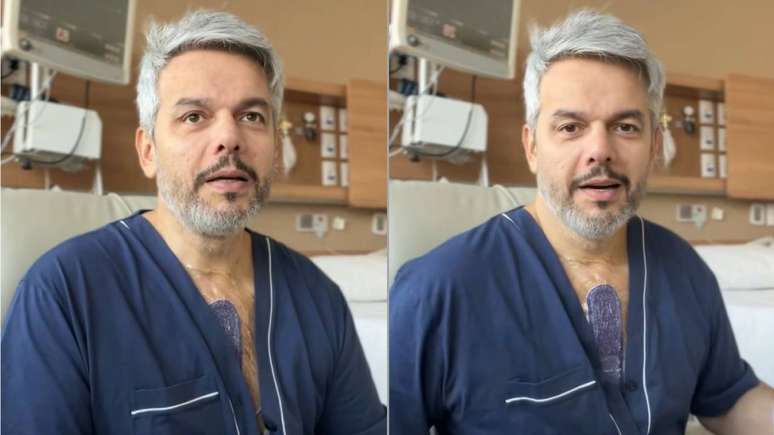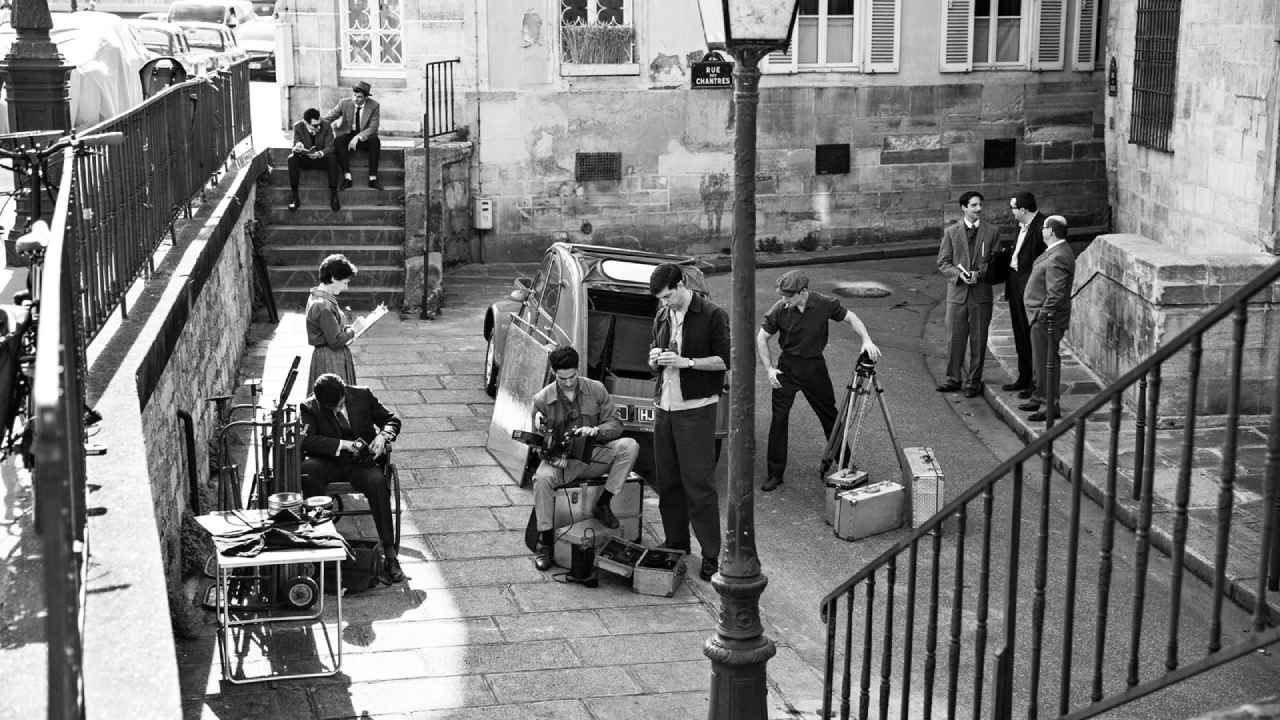‘A simple echocardiogram saved my life,’ said the presenter in an emotional video posted on his social networks
Otaviano Costa revealed on Monday (22) that he had to undergo a seven-hour surgery on the 10th after being diagnosed with an ascending thoracic aortic aneurysm. The 51-year-old presenter denounced the incident on his social media.
“About 30 days ago my life changed. I was in great health, I had no symptoms, but I had a little pain that bothered me here… [aponta para o coração]. Since for more or less two years I could not escape to São Paulo to undergo my routine check-up and to understand the evolution of my physical and health conditions, I decided to consult a doctor I did not know, a cardiologist Masetto, on Thursday, June 6, before Flavinha’s birthday”, said Otaviano.
According to the host, after undergoing an echocardiogram, he discovered that he needed surgery because it was an aortic aneurysm. “It is the swelling of the vein and, in my case, it was caused by a valve, called a bicuspid… It is a tricuspid valve, but I was born with a bicuspid valve, that is, the normal thing was to have three small valves, mine had two rods, premolars, so I poured a lot of blood into the aorta and lately it swelled up putting my life at risk, with any effort I made, day after day. , even dragging a heavy suitcase, doing a bench press or playing football with a heart beating fast would be fatal”, he commented.
Otaviano then underwent surgery at the Sírio-Libanês Hospital in São Paulo. The surgery was not simple and lasted about seven hours. He was supposed to stay in intensive care for three more days. Otaviano remains hospitalized, but is no longer at risk of death.
Excited, the presenter left a comment for his followers: “I really want to warn you. A simple echocardiogram saved my life. And it is in a SUS of life, in the hospital of your city, at the Incor here in São Paulo, or in Sírio like me. I have been blessed to be able to have incredible people not only for their expertise, but for their humanity, golden people that I will love for my whole life. From the moment you discover it, you have the possibility of mapping it. “
What is a thoracic ascending aortic aneurysm?
An ascending thoracic aortic aneurysm is an abnormal dilation of the wall of the aorta, the main artery that carries blood from the heart to the body.
According to Alexandre Siciliano, a heart surgeon and head of cardiology at Hospital São Lucas de Copacabana, “damage to the aorta can be caused by trauma, injury, or certain diseases and health conditions, including: Atherosclerosis (hardening of the arteries). Medial degeneration. Hypertension (high blood pressure). Genetic conditions (such as Marfan syndrome).”
In many cases, thoracic ascending aortic aneurysm has no symptoms, which makes early diagnosis difficult. However, some signs may indicate the presence of the disease, such as:
- Chest pain: The pain may be severe and radiate to the neck, back, or jaw.
- Shortness of breath: Difficulty breathing may be a symptom that the aneurysm is compressing other organs.
- Dry cough: A persistent cough with no apparent cause may be a sign of an aneurysm.
- Hoarseness: Compression of the trachea by the aneurysm can cause hoarseness in the voice.
- Difficulty swallowing: The aneurysm can also compress the esophagus, causing difficulty swallowing.
How is the diagnosis made?
The diagnosis of ascending thoracic aortic aneurysm is usually made through imaging tests, such as echocardiography and computed tomography (CT) or magnetic resonance imaging (MRI).
The risk of death from a ruptured ascending thoracic aortic aneurysm varies and depends on several factors, such as the size, location, and rate of growth of the aneurysm. Early diagnosis and appropriate treatment can significantly reduce the risk of death.
In the United States, the Centers for Disease Control and Prevention estimates that more than 43,000 patients die each year from aortic disease.
Dr. Alexandre Siciliano emphasizes: “If you suffer from aortic disease, it is important to be treated by an experienced team of cardiovascular specialists and surgeons. Connective tissue provides support to many structures in the body, such as the heart valves, blood vessels (aorta), eyes, bones, nervous system, and lungs; therefore, patients with connective tissue diseases require a multidisciplinary approach to their long-term care and follow-up.”
Source: Terra
Ben Stock is a lifestyle journalist and author at Gossipify. He writes about topics such as health, wellness, travel, food and home decor. He provides practical advice and inspiration to improve well-being, keeps readers up to date with latest lifestyle news and trends, known for his engaging writing style, in-depth analysis and unique perspectives.









